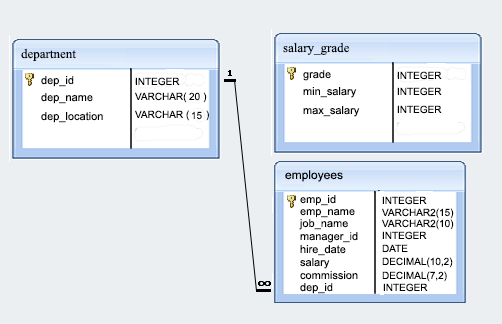SQL Exercise: List the number of employees and average salary
[An editor is available at the bottom of the page to write and execute the scripts.]
104. From the following table, write a SQL query to find number of employees and average salary. Group the result set on department id and job name. Return number of employees, average salary, department ID, and job name.
Sample table: employees
Sample Solution:
SELECT count(*),
avg(salary),
dep_id,
job_name
FROM employees
GROUP BY dep_id,
job_name;
Sample Output:
count | avg | dep_id | job_name
-------+-----------------------+--------+-----------
1 | 2750.0000000000000000 | 3001 | MANAGER
2 | 3100.0000000000000000 | 2001 | ANALYST
4 | 1500.0000000000000000 | 3001 | SALESMAN
1 | 2550.0000000000000000 | 1001 | MANAGER
1 | 6000.0000000000000000 | 1001 | PRESIDENT
1 | 2957.0000000000000000 | 2001 | MANAGER
2 | 1050.0000000000000000 | 2001 | CLERK
1 | 1400.0000000000000000 | 1001 | CLERK
1 | 1050.0000000000000000 | 3001 | CLERK
(9 rows)
Explanation:
The said query in SQL that returns the number of employees, average salary, department ID, and job name for each unique combination of dep_id and job_name from the employees table.
The GROUP BY CLAUSE groups the results by dep_id and job_name columns.
Relational Algebra Expression:
Relational Algebra Tree:
Go to:
PREV : Check if all the employees numbers are indeed unique.
NEXT : List the names of those employees starting with A.
Practice Online
Sample Database: employees
Have another way to solve this solution? Contribute your code (and comments) through Disqus.
What is the difficulty level of this exercise?
Test your Programming skills with w3resource's quiz.


